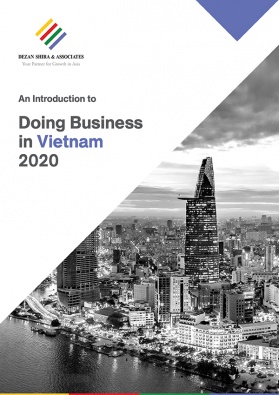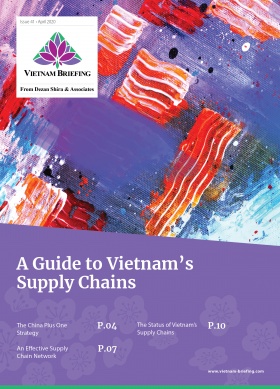Q&A: COVID-19 and Response to Supply Chain Disruption in Vietnam
The COVID-19 pandemic has had a significant impact on global supply chains and continues to affect businesses with worldwide operations. Vietnam itself has not been spared – and while it has done well to contain the pandemic – due to global interconnectedness – its economy has been affected resulting in losses for several businesses.
To gain an insight into the supply chain disruption, our Business Intelligence Assistant Manager – German Desk, Do Than Huyen, conducted a webinar on supply chain disruption in Vietnam. During this webinar, Huyen discussed Vietnam’s supply chain network and strategies businesses can implement to overcome the disruption due to the pandemic. The webinar can be downloaded here.
We highlight some insights discussed by Huyen below:
How has the pandemic affected the supply chain network in Vietnam?
While Vietnam has managed the pandemic well, it has been significantly affected by COVID-19. Vietnam’s imports raw materials from mainly Asian countries such as China, South Korea, and Japan. Last year, Vietnam imported almost US$4billion in car parts but with travel restrictions, this has resulted in supply chain bottlenecks.
Further, the travel restrictions on people, goods, and the number of confirmed cases of COVID-19 has resulted in labor shortages, logistic bottlenecks, and a shift towards online shopping.
Global air freight prices have spiked with commercials flights suspended. In one instance, Samsung had to fly electronic parts from China to its factories in Vietnam. This has resulted in a shortage of raw materials leading to an extended period of capacity shortage. While some factories have had to shut down due to social isolation measures, the lack of raw materials has also forced manufactures to shut production lines and reduce capacity.
Can you expand on the logistic bottlenecks?
Businesses have found it challenging to find alternate transport due to travel restrictions. This has also resulted in increased prices and increased demand for cargo space on air routes. With passenger flights suspended or reduced, cargo that is usually carried by these flights has to find alternate modes of transport. While carriers have increased cargo flights, the demand has not been able to meet capacity as yet.
The logistic network faces significant challenges as borders remain closed or have limited operations. Logistic providers have also reported that while borders at some countries remain open, custom procedures and approvals are lengthy increasing delays and costs, frustrating suppliers.
What are the major industries affected and how has this affected suppliers?
Textile and apparel, leather and footwear, automobile parts, and electronics have been significantly affected due to their diverse supply chain networks. For low-value-added products, producers typically keep 2-3 months of production input on hand, but for high-value electronic products, manufacturers store just 2-4 weeks of components due to the high cost of financing. For example, yarn for the textile industry will be less affected compared to a complicated GPS system in an automobile. In fact, Ford and Honda were forced to suspend production during the pandemic in Vietnam.
Tier 1 suppliers (ones that provide the original equipment manufacturer (OEM) with what they need) and tier 2 suppliers (the key suppliers to tier 1) have been the most affected in the global supply chain affecting not only foreign but domestic suppliers as well.
What are some of the strategies for addressing these supply chain issues?
The first step that businesses should take is to conduct an end-to-end analysis of their supply chain amid the COVID-19 pandemic. The analysis consists of the current plan, procurement, manufacturing, logistics, distribution, and the return system.
The second step recommended is to develop short-term and long-term strategies. This involves strategies in production planning, procurement, logistics, and distribution channels.
Any other strategies?
The traditional metrics for improving supply chain competitiveness have been cost, quality, and delivery. However, the COVID-19 is a good wake up call for businesses showing they need to be prepared for any major event. For example, natural disasters, climate change, and geopolitical tensions are factors manufacturers need to consider in a world post COVID-19. Apart from the traditional metrics, we recommend the 3Rs – Resilience, responsiveness, and reconfigurability of the supply chain.
While Vietnam has done well to contain the pandemic and reopen the economy, it has developed an early advantage compared to its regional peers. Businesses placed here can use this to their advantage but also better prepare themselves for any future shocks.
About Us
Vietnam Briefing is produced by Dezan Shira & Associates. The firm assists foreign investors throughout Asia from offices across the world, including in Hanoi and Ho Chi Minh City. Readers may write to vietnam@dezshira.com for more support on doing business in Vietnam.
- Previous Article Why Investors Should be Excited About Vietnam: Provincial Competitive Index 2019
- Next Article Vietnams Autoindustrie und Chancen für die EU-Investoren





























